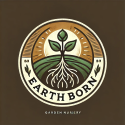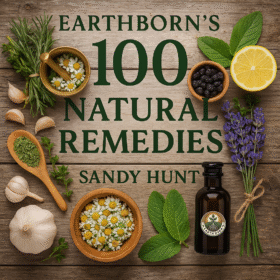
Myrsine africana, known as African boxwood, Cape myrtle, or Boesmanhout, is a hardy evergreen shrub native to South Africa and parts of eastern Africa and Asia. Traditionally used by the Khoisan and various indigenous communities, this member of the Primulaceae family was valued not just for its resilience and compact foliage, but also for its medicinal significance and spiritual uses. Today, it remains popular for its tidy growth habit and suitability as a hedge or ornamental feature.
💊 Medicinal Benefits
African boxwood leaves are rich in flavonoids, tannins, and saponins, granting the plant several therapeutic properties:
- 🌿 Antioxidant and anti-inflammatory
- 🌬️ Traditionally used for respiratory issues
- 💪 May support immune function and wound healing
These uses are based on traditional knowledge; modern clinical evidence is limited. Always consult a health professional before using herbal remedies.
📅 When to Plant in South Africa
Best sown or transplanted in spring (August to October).
- 🌱 Seeds take 2–3 months to germinate.
- 🌿 Young plants (6–12 months old) transplant well.
- 🍃 Leaf harvest is ideal after 2–3 years of growth.
🏡 Where to Plant
African boxwood prefers open ground in gardens or borders. While it can tolerate containers, it thrives best when planted directly in soil.
🌞 Soil, Water & Sunlight Requirements
✅ Soil: Acidic, well-draining soil enriched with organic matter.
✅ Sunlight: Partial shade to full sun.
✅ Water: Moderate watering—allow soil to dry between sessions.
✅ Fertilize: Use a balanced organic fertilizer monthly during the growing season.
✅ Spacing: Plant 60–90 cm apart to allow for healthy airflow and growth.
✅ Seeds Germinate: 8–12 weeks with warm temperatures and moist conditions.
✅ Transplanting: Best done in spring with hardened-off seedlings.
✅ Maturity Height: 1 to 2 meters, though can be pruned to shape.
🍓 Flowers & Fruit
Small, inconspicuous pale flowers appear in spring, followed by red to purple berries that attract birds. Both flowers and fruit are subtle but add to the plant’s charm.
🌼 Companion Plants
Pairs beautifully with:
- 🌸 Fynbos
- 🎋 Restios
- 🌺 Proteas
These companions enhance biodiversity and share similar growing conditions.
🐛 Common Pests
Watch out for:
- 🕷️ Spider mites
- 🐜 Aphids
Neem oil or insecticidal soap can help manage infestations organically.
🧺 Harvesting
Leaves can be carefully snipped for medicinal or tea use after 2–3 years. Harvest sparingly to maintain the plant’s vigor and form.
🫙 Storage
Dry harvested leaves in a shaded, ventilated area. Store in airtight glass jars away from heat and light for up to a year.
🧪 How to Use as Medicine
Traditional preparations include:
- 🍵 Tea: Steep 1 tsp dried leaf in hot water for 10–15 minutes.
- 🌿 Infusion or decoction: Used for respiratory relief or inflammation.
- 🔬 Use under guidance from a trained herbalist or healthcare provider.
Check out our herbal remedies section for more recipes
🎉 Fun Fact
Myrsine africana is dioecious—male and female flowers occur on separate plants. Only female plants bear berries!
⚠️ Caution
Some individuals may experience allergic skin reactions. Avoid during pregnancy or while breastfeeding unless advised by a qualified herbal practitioner.
📣 Call to Action
Add the evergreen charm and healing legacy of African boxwood to your Earthborn garden! Its low-maintenance nature, medicinal potential, and beautiful form make it a standout choice for natural wellness gardens in South Africa. 🌿🌍


 **Meet Sprout!** Sprout is your friendly gardening companion at Earthborn, always ready with helpful advice on plant care, medicinal herbs, and natural gardening solutions. From seedling to harvest, Sprout provides expert guidance to nurture your garden and your well-being—making gardening easy, fun, and naturally rewarding.
**Meet Sprout!** Sprout is your friendly gardening companion at Earthborn, always ready with helpful advice on plant care, medicinal herbs, and natural gardening solutions. From seedling to harvest, Sprout provides expert guidance to nurture your garden and your well-being—making gardening easy, fun, and naturally rewarding.

[…] Get the growers guide here […]